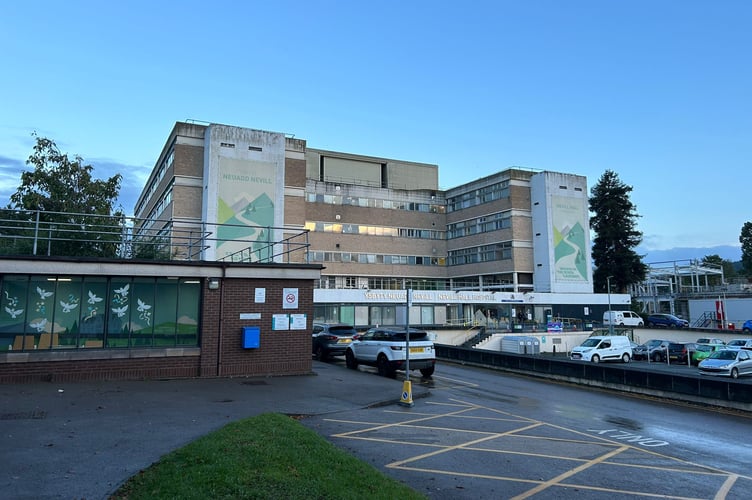GWENT’S health board could have to spend up to £5 million on addressing crumbling concrete at the Nevill Hall Hospital in Abergavenny.
Offices at the hospital found to be at risk due to the lightweight concrete have been closed since November last year as health chiefs have been monitoring the potential danger.
They have already identified an estimated £35m maintenance backlog at the 1960s built hospital with £15m needing to be spent in the areas of the hospital where the potentially dangerous concrete, known as RAAC (Reinforced Autoclaved Aerated Concrete), is present.
Work to address the areas at highest risk will have to be undertaken over the next 12 months while the £5m figure, which is on top of the maintenance backlog, relates to further remediation of those areas over the “medium term” but is described as a “high level estimate”.
A report for the Aneurin Bevan University Health Board has said “essentially everything of single storey, flat roof structure” at the hospital has used the pre-cast concrete which is now known have a lifespan of 30 years.
As a result it is having to monitor 7,505 roofing panels and it has said a large amount of plant and ductwork on top of the flat roofs also compromises the integrity of the panels.
Of the approximately 14,472 square metres of RAAC in Nevill Hall 4.8 per cent has been identified as “high critical” meaning immediate action has had to be taken and as a result there are 400 props holding up roofs across the hospital site.
In some areas additional timber support has been used instead of props if they would have meant those parts of the hospital could no longer be used.
A report for the health board has also confirmed, as previously disclosed, the presence of the flawed concrete has resulted in the closure of four offices, and one room since November 2022 while the hospital chapel was temporarily closed for further surveying work recently.
The report also states Nevill Hall is the only site within the health board found to have RAAC present.
Inspections have shown that 60 per cent of the RAAC panels are at low risk but the overall risk rating has been increased to ‘High’ – which means non-urgent, remedial works are required as soon as practicable – due to the way the end barings of the panels are intended to be supported by steel bars. The report states: “This however is predominantly down to original design methodology of the hospital and not as a result of the presence of RAAC.”
The Welsh Government asked health boards to identify if RAAC was present in February 2022 which prompted various desktop surveys and further monitoring work and the report states surveying, installing props and planks and other remediation work has already cost some £250,000.
Members of the health board will discuss the report when they meet on Wednesday, September 27 and will also consider the intended future use of Nevill Hall where it has already started work on a satellite radiotherapy centre and is considering the future of stroke rehabilitation services.
It is hoped the Welsh Government will provide additional funding to cover the cost of the repairs with the report stating: “There is currently no identified funding stream for this quantum of capital and the working assumption is the Welsh Government will fund the required works. This work will need to be undertaken whilst determining the long-term solution to eradicate RAAC.”
The health board is holding weekly meetings with the Welsh Government and NHS Estates and also in contact with NHS England to discuss its approach.




